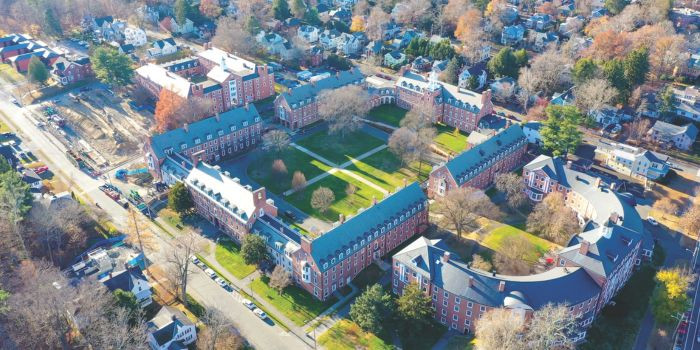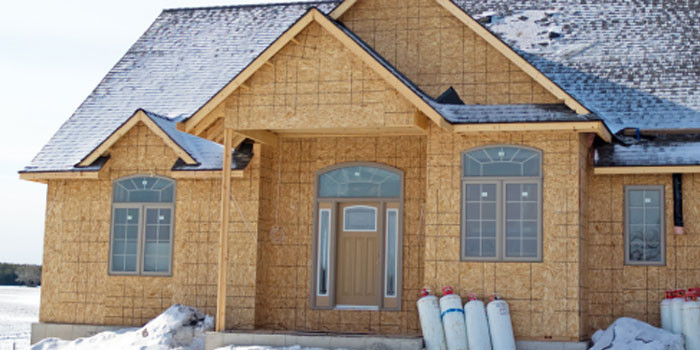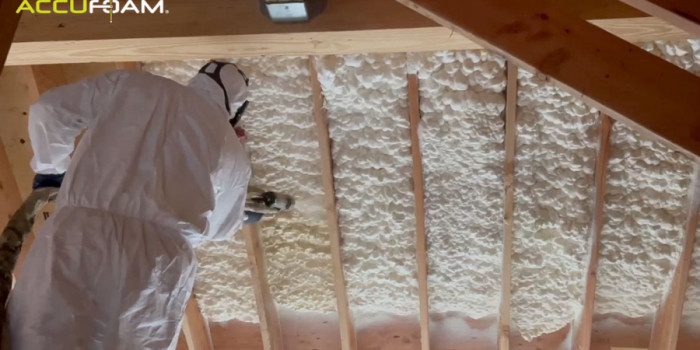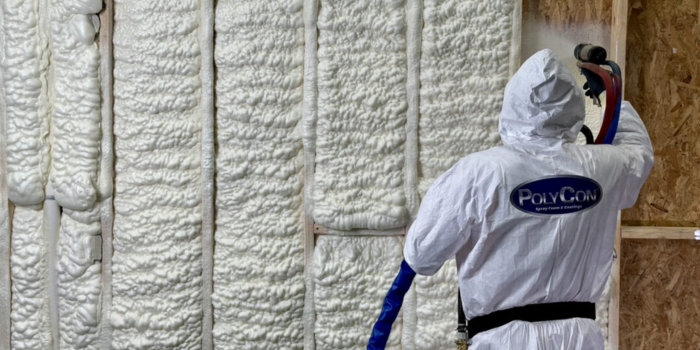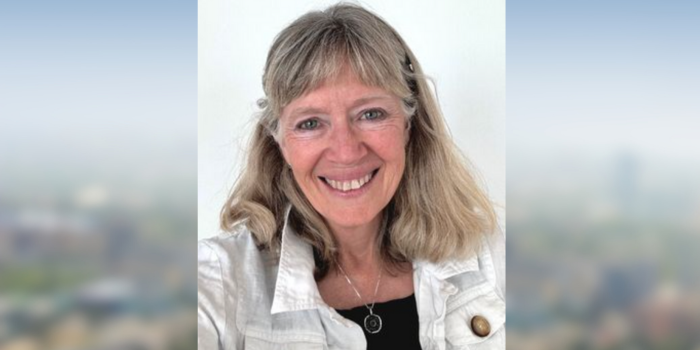There’s No Place Like Dome
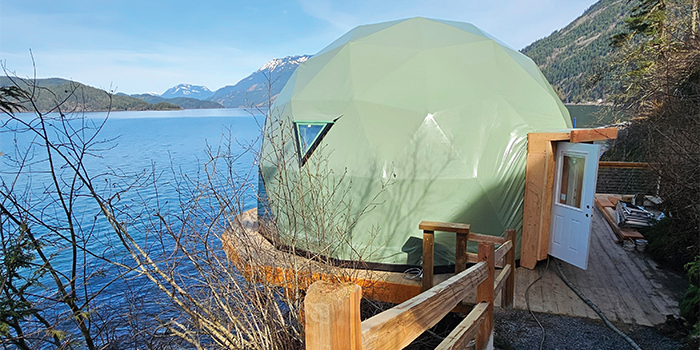

SPRAY FOAM MAGAZINE – Spray foam insulation is such a versatile product that it can be found on structures of all shapes, sizes, and substrates, even in locations far off the beaten path—such as the canvas walls inside of a geodesic dome deep in British Columbia’s Fraser Valley. Travelers visit the Fraser Valley year-round to experience its breathtaking natural scenery by hiking in the mountains, going for a dip in its lakes and hot springs, and camping out in the many unique travel accommodations the area has to offer. For some travelers, glamor camping, or “glamping” provides the perfect mix of communing with nature in an Instagram-worthy environment, and renting out geodesic domes makes for a truly unforgettable stay. But for all the aesthetic benefits of camping in a geodesic dome, Canada’s winters can easily turn an adventurous getaway into a frigid fiasco if the inside of the domes aren’t properly and professionally insulated.
Nearby in Abbotsford, BC is Element Spray Foam, Inc, an insulation company run by Ryan Esau and Colin Willems since 2012. The name of their game is bringing energy efficiency and low power bills to all of their clients, and BC offers them no shortage of opportunities to flex their respective skills and complementary backgrounds. Both partners have extensive carpentry experience and Willems holds a degree in chemistry, while Esau holds a degree in mechanical drafting. Over their decade-plus in the insulation business, they’ve grown their team to eight-strong and have taken on jobs in various residential, commercial, and agricultural structures all over the local area and beyond. They’ve used spray foam to solve numerous problems for all sorts of clients, and take great satisfaction in knowing that their products and services can save their clients considerable amounts of cash, and in some cases, can even help their clients earn money, too.
Such is the case with two of Element’s recent clients, brother-in-law business owners who each own and manage Airbnb’s geared toward the nature-loving traveler. One runs Cultus Lake Glamping in Chilliwack, BC, a destination spot featuring a collection of stargazer tents and a geodesic dome. Nearby at Harrison Hot Springs, the other brother-in-law runs a series of cabins and carriage houses called The Lodge on Harrison Lake. The Lodge recently added a geodesic dome to the repertoire, after seeing how much of a hit the Cultus Lake dome had been with visitors. While the domes were incredibly alluring to visitors, they unfortunately weren’t well-suited for all-seasons rental, particularly in the winter months, as it did not retain heat well.
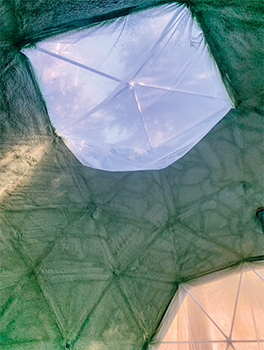
The interior of the Cultus Lake Glamping geodesic dome after the foam application but before the interior fabric was hung back up.
“They were having trouble keeping guests comfortable in the cold, to the point they weren’t comfortable renting them out when temperatures got too low.” Willems recalls.
The dome’s insulation issues caused issues for the Airbnb business, because they had to sit empty for nearly half the year until the snow melted and temperatures warmed up. The owners wanted to get the most out of their investments, so they began to research ways to increase the warmth in their domes all year long. It wasn’t long before they’d reached out to Element Spray Foam for help insulating the domes.
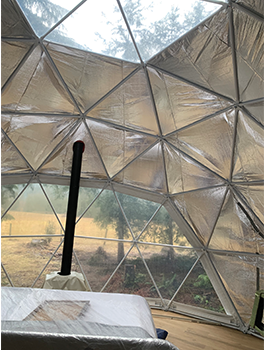
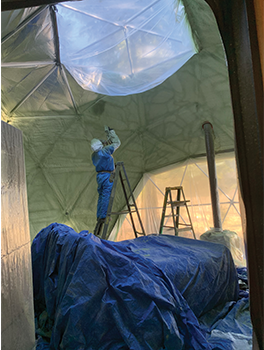
This dome featured a skylight, an oversized window, and a chimney pipe for a propane camp stove, all of which had to be carefully covered before spraying SES Nexseal 2lb closed-cell foam.
After speaking to the Airbnb owners, Willems traveled out to the Cultus Lake dome for a consultation in February of 2024. The first order of business was to assess the work site and the substrate to formulate an estimate and work out the logistics. Element had sprayed plenty of cabins, but spraying a dome was a new experience. While checking out the site, Willems got a handle on how the geodesic domes are built, and how the substrate differed from more traditional buildings.
The domes are built using a prefabricated kit purchased from a manufacturer specializing in glamping accessories, such as domes, glamping tents, saunas, and more. The manufacturer intended the domes to be semi-permanent and portable, able to be easily disassembled and moved around if needed. The insulation options offered reflect this intent. For example, the manufacturer sells reflective bubble liner insulation for the inside of the dome, but even that wasn’t quite enough to measure up against BC’s outdoor winter temperatures. The Airbnb owners did not mind if their domes couldn’t be easily deconstructed and were open to the idea of using closed-cell foam insulation as a permanent solution that would both insulate the dome and enhance the dome’s structural integrity.
“It can get pretty windy out on the lake, so the foam helps keep everything more comfortable and stable.” Willems explains.
The dome’s unique structure is made out of several materials not commonly used as a substrate in the spray foam world. The frame is composed of powder-coated steel piping interlocked together. The walls are a thick, durable PVC canvas stretched over the frame like a shell, and its tautness can be manually adjusted. A second mildew-resistant fabric liner is bolted to the interior to give the inside of the dome a polished, airy finish. The Element team determined the SES Nexseal 2lb closed-cell foam would adhere just fine to the PVC canvas.
Visiting the site for the consultation also served the purpose of logistical planning. Each of the domes were located in fairly secluded forested areas.
“Because it was in a pretty remote area, we had to make sure the roads could accommodate our vehicle and trailer.” Willems described.
It would be a tight squeeze, but fortunately, Element was able to park their vehicles fairly close, and had enough length on their 200-foot spray hose to reach both domes with ease. There was also the issue of power. The secluded work sites did not offer any external power sources, so Element had to be entirely self-sufficient in powering their equipment off a generator, meaning they’d have to work quickly.
Once they had nailed down the details and gotten a feel for the site, the team got started. Before arriving at the site, they asked the Airbnb owners to make sure the PVC canvas walls were stretched as taut as possible, because once the foam went on, the canvas would be stiffened and stuck in that position. They also requested that the owners clear most of the existing furniture out of the domes, so that they would have a clean and clear work area given the small space. But not all the furniture could be easily removed. A bed frame had to stay inside the Cultus Lake dome, and they had to carefully work around it. The Element team taped protective plastic coverings to the bed frame, floors, and all window panels to guard everything from overspray. With the help of the owners, they also untacked the dome’s interior fabric liner and removed all the bolts used to hang it up. The spray foam layer was applied to the PVC canvas on the inside of the domes, and then the inner liner was hung back up over the top of the foam layer. The domes also have a skylight, a large bay window, and a smaller triangle-shaped window, which the Element team had to be careful not to get any overspray on. Even though visitors to the dome wouldn’t be able to see the foam layer after all was said and done, the Element team still worked cleanly, applying the foam in smooth, even layers.
For both domes, they applied SES Nexseal 2lb closed-cell spray foam. The Cultus Lake dome received two inches of foam around the entirety of its interior. The Harrison Lake dome got three inches of foam, due to its location being further North and situated right on the edge of the lake, making it more vulnerable to extreme weather conditions. Both domes were about 24-feet in diameter, give or take.
Spraying the domes was only a two-man job, and the Element team worked quickly, trying to stay ahead of several potential challenges. They sprayed the Cultus Lake dome in February, which meant the weather was still cold and unpredictable, prone to rain and humidity. Luck was on their side, however, and they didn’t experience any weather delays. Although it was cold, they could still leave the dome’s door open for ventilation without the temperature affecting the spray foam’s adherence to the PVC canvas substrate. For PPE, they wore Tyvek suits, gloves, and a full-face respirator. They sprayed the dome at Harrison Lake in mid-March, when the weather was slightly nicer and more accommodating. It only took them about a day and a half to spray each dome, including the time needed for site preparation and clean-up.
When all was said and done, both Airbnb owners were impressed with the team’s knowledge and skill, and with the massive temperature difference made by adding closed-cell foam to the domes.
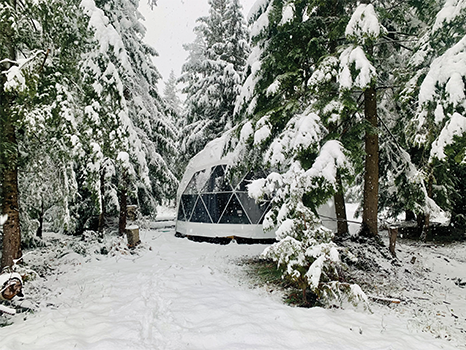
Closed-cell foam was the best choice to allow Airbnb guests to enjoy their stay during the cold Canadian winters.
Spray foam proved to be exactly the solution needed to make the domes accommodating and welcoming in all seasons. The Airbnb owners can now host guests in the geodesic domes year-round, allowing travelers to experience the Fraser Valley when the greenery is in bloom or when the snow dusts everything around.
For use by SprayFoamMagazine.com & Spray Foam Magazine
Disqus website name not provided.





